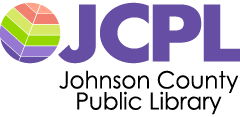
A nationally renowned poet who makes his home right here in Indiana, Adrian Matejka was the natural choice to kick off our brand new program series, “Authors at JCPL.” His collection “The Big Smoke” was a finalist for the National Book Award and the Pulitzer Prize, and his new collection, “Maps to the Stars,” is directly influenced by his childhood in Indianapolis.
We asked Adrian a few questions ahead of his April 29 visit to the Franklin Branch.
Johnson County Public Library: You’ve lived in a variety of places, including Germany, California and Indiana. How does where you live affect what you write? And what does Indiana mean to your writing?
Adrian Matejka: For a long time, I didn’t think that any of the towns or cities I lived in mattered to my writing. I thought that poems were “POEMS” and should be bigger than place or time somehow. My poems often tell stories, though, and one of the most of the important things in a story is setting. This became especially clear when I moved back to Indiana after being gone for 22 years. I was immediately inspired (which is a nice way of saying "creatively forced") to write about Indianapolis.
Suddenly, all of these Indy landmarks became part of my poems, either as setting or as a signpost. Some of the things in the poems (like the mighty Lincoln Middle School) are gone now. But many other things I remember from the late 1980s—the Pyramids, the Speedway, Bertha Ross Park—are all still around. I didn’t realize how important those landmarks were to my perspectives until I came home. Where I live doesn’t necessarily influence the writing directly, but it is so important to the poems in one way or another.
JCPL: Your last book was inspired by the legendary boxer Jack Johnson. What are the themes that unite your new book?
AM: My new book is set in Indianapolis in the 1980s and all of the poems address poverty, economics and race in one way or another. They are also connected by astronomy, which might seem like a different conversation, but it’s not. When I was a kid, I imagined that the only place I could truly be myself was outer space. I’m talking about outer space as depicted in books and movies here. “Star Wars” was pretty homogenous, but Lando Calrissian was clearly the coolest in the cast. “Star Trek” was incredibly diverse and they treated each other with respect on screen.
All of that interstellar equality made me want to be the first black astronaut. Guion S. Bluford beat me to it in 1983. Right in the middle of the Reagan administration’s War on Drugs which disproportionally affected young black men. I hope that the poems in “Map to the Stars” offer a different take from some of the more privileged perspectives we encounter in discussions of the Reagan Era.
JCPL: Your poems often refer to other art forms, especially painting and music. What can poetry do that other art forms can’t?
AM: Poetry distills emotion and narrative into their tightest components. A good poet can create a scene, tell a story, make you cry or smile in just a few precise lines because the words go straight from the page to the listener’s brain and heart. Music is the only other art that approximates that distillation, so it’s probably not surprising the word “rhythm” comes from Greek word rhythmos which means “measured motion.” For me, poetry is the most direct and rhythmic form of communication.
JCPL: You do a lot of readings; do you think of your poems’ natural “home” as spoken aloud or printed on the page?
AM: Poetry began as part of the oral tradition and I think that it is still best experienced aloud. We had poems before we had written language and many of the great epic poems—“Beowulf” or the “Iliad,” for example—were memorized and performed as living documents. They were eventually written down, but not before being revised and edited during performances by the various poets who would recite the work.
The best poets carry on the oral tradition by considering how the words will resonate both on the page and in the reader’s ear. If you can’t hear the poet’s rhythms and music, there’s not much point in thinking about the words. It’s like the great poet Etheridge Knight said, “Making jazz swing in / Seventeen syllables AIN’T / No square poet’s job.”
JCPL: You also teach poetry at Indiana University; what poets do you recommend your students read to improve their own writing?
AM: I have a list of books I suggest to my students based on the kind of poetry they are writing, their strengths and interests. But generally, the list includes at least one of the following: Gwendolyn Brooks’s “Blacks,” Lucille Clifton’s “Blessing the Boats,” Yusef Komunyakaa’s “Neon Vernacular” and James Wright’s “The Branch Will Not Break.” All four poets are incredible enablers of language and are considerate of the reader. By that, I mean these poets all want to clearly communicate with the audience in their poems. They want their work to be understood. The main thing I try to share with my students is that writers read constantly. It’s impossible to write good poetry if you don’t read poetry.
JCPL: If you weren’t a poet and a teacher, what would you do for a living?
AM: I worked in bookstores in college and after, so I imagine I would have tried to continue in that business. In fact, I worked at Amazon.com way back in 1996 when it was a very small company and only sold books. The only reason I left Seattle was so I could focus on my graduate studies and try to figure out how to write better poetry.
JCPL: What is your favorite book and why?
AM: That’s the hardest question of them all! In general, I spend time with writers and try to read all of their work, rather than single volumes. So James Baldwin, Gwendolyn Brooks, Raymond Chandler, Robert Hayden and Carl Sagan are all writers whose work I enjoy across the board and return to often. If I had to pick a favorite book today, it would probably be Yusef Komunyakaa’s “Neon Vernacular.” It’s a great sampling of his earlier work and includes some of my favorite poems like “Slam, Dunk, & Hook” and “You and I Are Disappearing.”


